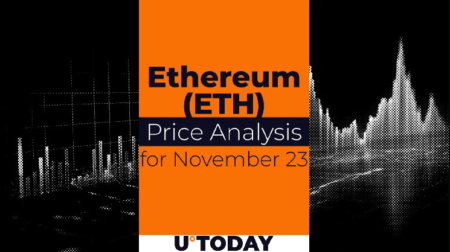Ethereum, the pioneer of smart contracts, contracts, is gearing up for a transformation with its latest initiative, “The Purge.” Recently, Ethereum co-founder, Vitalik Buterin discussed the upcoming phases of the Ethereum ‘Purge,’ on X.
A quick note on next steps in Ethereum protocol simplification and node resource load decreases (aka “the Purge”):https://t.co/BAebCGrisB
— vitalik.eth (@VitalikButerin) April 1, 2024
What is the ‘Purge?’ Let’s find out.
Ethereum’s Evolutionary Journey
One of the primary pain points of Ethereum has been the soaring gas fees, making transactions prohibitively expensive for many users. As the network expanded, so did the disk space requirements, escalating maintenance costs.
Moreover, Ethereum’s PoW consensus mechanism caused a heavy toll on the environment due to its substantial energy consumption.
Ethereum made headlines with its successful transition from the energy-intensive proof-of-work (PoW) consensus mechanism to the more sustainable proof-of-stake (PoS) protocol on September 15, 2022. This shift laid the groundwork for further advancements in scalability, security, and sustainability.
However, the journey towards Ethereum’s full potential is far from over, with “The Purge” being a crucial phase in its ongoing development roadmap.
The Essence of The Purge
“The Purge” encompasses a series of upgrades aimed at decluttering the Ethereum network and simplifying its architecture. By removing outdated network history and streamlining operations, Ethereum seeks to reduce historical data storage and alleviate the technical burden on node operators.
This upgrade, known as EIP-4444, sets a precedent for expiring historical data after a designated period, significantly reducing storage requirements. Nodes will have the option to reduce the size of historical data, optimizing resource utilization locally.
Evolution of Syncing Mechanisms
With the implementation of The Purge, syncing mechanisms will transform. New nodes will adopt a checkpoint sync approach, starting from the most recent finalized checkpoint block rather than the genesis block. This streamlined syncing process enhances efficiency and reduces resource overhead.
Streamlining Ethereum Clients
Complementing The Purge, Ethereum clients will undergo comprehensive cleanup efforts to remove redundant code remnants from the PoW era. Recent Ethereum Improvement Proposals (EIPs) enhance code efficiency and security measures, paving the way for a more robust ecosystem.
Optimizing Data Storage
EIP-4444 introduces the concept of “blobs” for specific data storage, minimizing long-term storage requirements and facilitating easier node participation. Automatic removal of older blocks further alleviates storage constraints, enhancing scalability and accessibility.
Enhancing Node Decentralization
The Purge promotes node decentralization by redistributing historical data across the network. While not all nodes will store complete historical data, decentralized solutions ensure accessibility and resilience, fortifying Ethereum’s core tenets.
Redefining Contract Functionality
In line with The Purge, Ethereum evaluates and optimizes precompile contracts to streamline functionality and mitigate consensus bugs. Simplified data structures and protocol enhancements boost Ethereum’s efficiency and reliability.
By simplifying the network and staying true to its decentralized nature, Ethereum aims to unlock new possibilities.
Read the full article here









